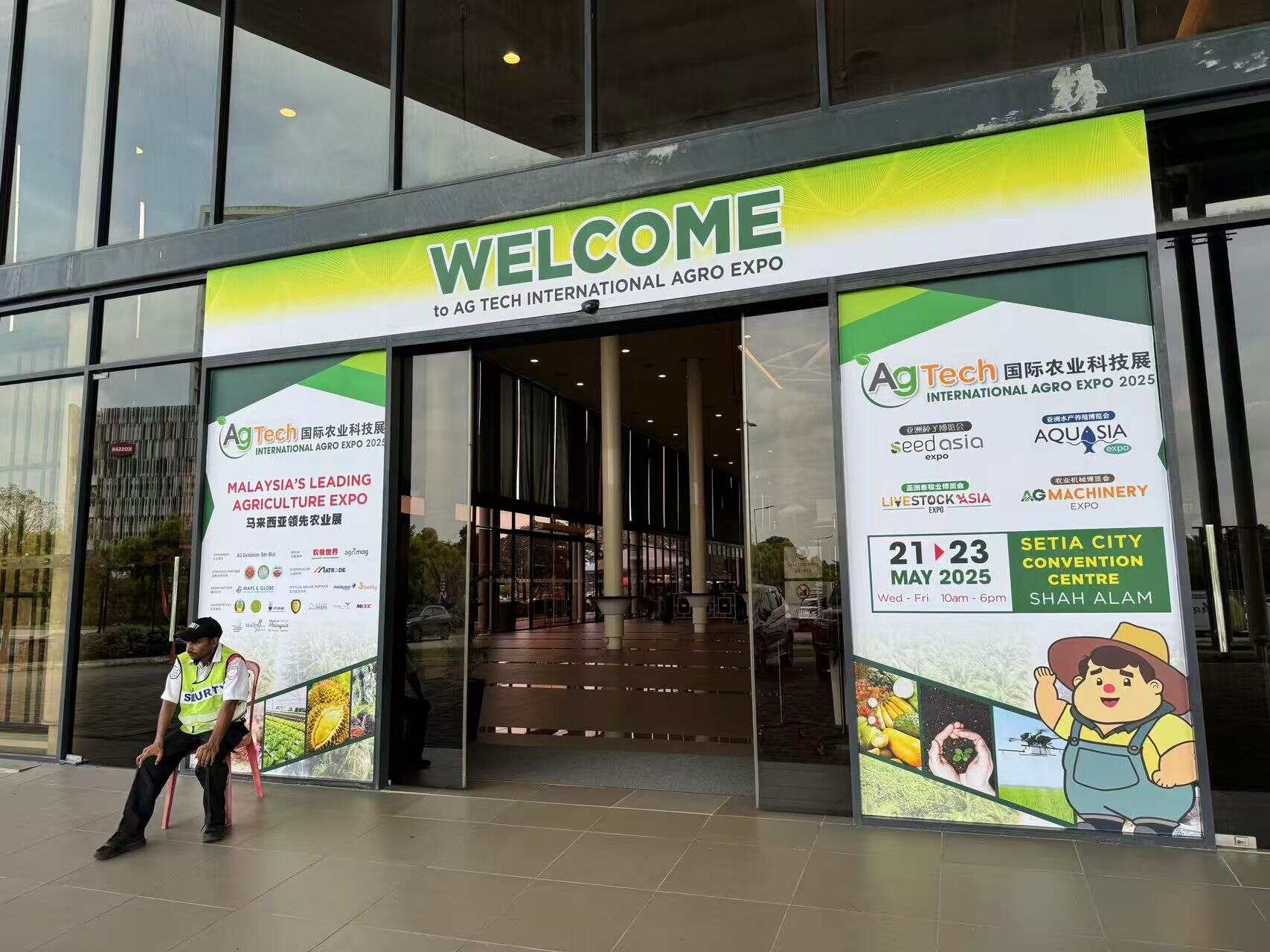- 73 UPPER PAYA LEBAR ROAD #06-01C CENTRO BIANCO SINGAPORE 534818
- zengy7073@gmail.com
Email format error
Email cannot be empty
Email already exists
6-20 characters(letters plus numbers only)
The password is inconsistent
Email format error
Email cannot be empty
Email does not exist
6-20 characters(letters plus numbers only)
The password is inconsistent


Malaysia's Leading Agriculture Expo 2025: Transforming Southeast Asian Agriculture Through Innovation and Strategic Partnerships
The AgTech International Expo 2025, held in Malaysia, stands as Southeast Asia's premier agricultural showcase, bringing together over 30 years of industry expertise to drive agricultural transformation across the region. This year's exhibition demonstrated Malaysia's pivotal role as the agricultural innovation hub of Southeast Asia, offering invaluable insights for fertilizer companies seeking to expand their market presence in this dynamic region.
The Expo's Scale and Strategic Importance
The 2025 exhibition featured an impressive array of international and regional participants across multiple halls, showcasing everything from advanced agricultural machinery to cutting-edge fertilizer technologies. The comprehensive floor plan revealed the expo's strategic organization, with dedicated zones for different agricultural sectors, creating an ecosystem where innovation meets practical application.
What makes this expo particularly significant is its role as a convergence point for the entire agricultural value chain. From seed producers and fertilizer manufacturers to equipment suppliers and agricultural technology companies, the event serves as Malaysia's gateway to the broader Southeast Asian agricultural market, which represents over 650 million potential consumers.
Key Learnings from the Expo Experience
1. Precision Agriculture is Driving Market Demand
The exhibition highlighted a clear shift toward precision agriculture solutions. Advanced fertilizer formulations, including the various NPK combinations displayed (NPK 12-1-1, NPK 1-10-10, NPK 2-4-6, NPK 3-2-5, NPK 4-2-2), demonstrate the market's evolution toward targeted nutrient management. This trend indicates that Southeast Asian farmers are increasingly sophisticated in their approach to soil nutrition, creating opportunities for specialized fertilizer products.
2. Sustainability Takes Center Stage
Major industry players like YARA, with their prominent "Good for Farms, Good for Future" messaging, emphasized sustainable farming practices. The presence of organic and bio-based fertilizer solutions alongside traditional chemical fertilizers signals a market ready for environmentally conscious products. This dual approach allows fertilizer companies to serve both conventional and sustainable agriculture segments.
3. Technology Integration is Essential
The expo showcased numerous agricultural technology solutions that complement fertilizer applications, from soil testing equipment to precision application systems. This integration suggests that successful fertilizer companies in Southeast Asia must think beyond just product sales to offer comprehensive agricultural solutions.
4. Regional Partnerships Drive Success
The diverse mix of local Malaysian companies alongside international giants like YARA demonstrates the importance of regional partnerships. Companies that succeed in Southeast Asia typically combine global expertise with local market knowledge and distribution networks.
Strategic Insights for Fertilizer Operations in Southeast Asia
Market Positioning Opportunities
The Southeast Asian fertilizer market, as evidenced by the expo, presents several distinct opportunities:
Diverse Crop Requirements: The region's agricultural diversity, from palm oil plantations to rice paddies and tropical fruits, creates demand for crop-specific fertilizer formulations. Companies that can offer tailored solutions for different agricultural sectors will capture greater market share.
Premium Product Acceptance: The presence of advanced fertilizer technologies at the expo indicates that Southeast Asian farmers are willing to invest in premium products that deliver superior results. This opens opportunities for value-added fertilizers, including slow-release formulations and micronutrient-enhanced products.
Supply Chain Efficiency: Malaysia's strategic location and well-developed infrastructure make it an ideal hub for fertilizer distribution across Southeast Asia. Companies establishing operations in Malaysia can efficiently serve markets in Thailand, Indonesia, Philippines, and Vietnam.
Competitive Landscape Insights
The expo revealed several key competitive dynamics:
International vs. Local Balance: While global companies like YARA maintain strong positions, there's significant space for regional players who understand local needs and can offer competitive pricing.
Product Innovation Leadership: Companies showcasing the latest fertilizer technologies and formulations attracted the most attention, suggesting that innovation remains a key differentiator in this market.
Service Integration: Successful exhibitors offered comprehensive packages combining products, technical support, and agricultural advisory services, indicating that service capability is becoming as important as product quality.
Regulatory and Market Access Considerations
The expo highlighted the importance of understanding regional regulatory frameworks. Companies with proper certifications and compliance documentation had more prominent displays and seemed to attract more serious business inquiries. This suggests that navigating Southeast Asian regulatory requirements is crucial for market entry and expansion.
Strategic Recommendations for Fertilizer Market Entry
Based on the expo insights, fertilizer companies should consider the following strategic approaches for Southeast Asian market success:
1. Develop Regional Product Lines
Create fertilizer formulations specifically designed for Southeast Asian crops and soil conditions, moving beyond generic NPK ratios to specialized blends for palm oil, rice, rubber, and tropical fruits.
2. Establish Malaysian Operations
Use Malaysia as a regional hub for manufacturing, distribution, or marketing operations. The country's infrastructure, regulatory environment, and central location make it ideal for serving the broader Southeast Asian market.
3. Invest in Digital Integration
Combine traditional fertilizer products with digital agricultural solutions, such as soil monitoring systems, application guidance apps, and crop management platforms.
4. Build Local Partnerships
Develop strategic alliances with local distributors, agricultural cooperatives, and farming organizations to ensure effective market penetration and customer support.
5. Focus on Sustainability
Develop and promote environmentally sustainable fertilizer solutions that align with the region's increasing focus on sustainable agriculture practices.
Conclusion: The Path Forward
Malaysia's AgTech International Expo 2025 clearly demonstrated that Southeast Asia's agricultural sector is undergoing rapid transformation, driven by technological advancement, sustainability concerns, and increasing food security needs. For fertilizer companies, this presents an unprecedented opportunity to establish meaningful market presence in one of the world's most dynamic agricultural regions.
The expo's success in bringing together diverse stakeholders—from smallholder farmers to multinational corporations—illustrates the collaborative spirit driving Southeast Asian agriculture. Companies that can align their fertilizer solutions with this spirit of innovation and sustainability, while respecting local needs and practices, will find themselves well-positioned for long-term success in this vital market.
The future of fertilizer operations in Southeast Asia lies not just in providing products, but in becoming integral partners in the region's agricultural transformation journey. The 2025 expo has shown us the roadmap; now it's time to follow it toward sustainable growth and mutual prosperity.
